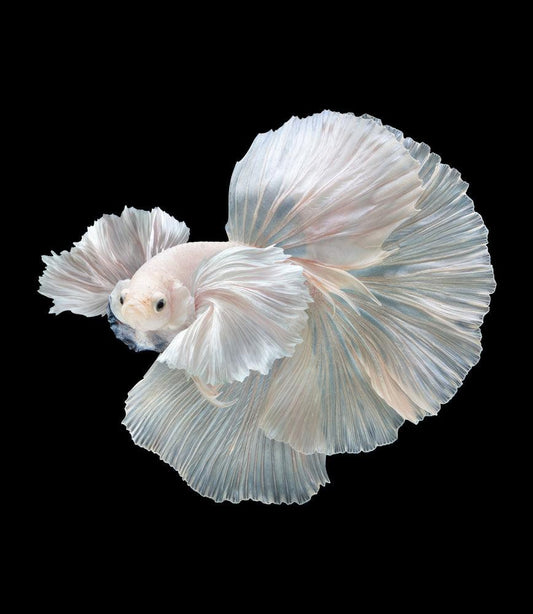Reproducing Betta Fish: a Comprehensive Step-By-Step Guide to Effectively Raising Baby Bettas From Eggs to Their Adult Years
Reproducing Betta fish is a careful undertaking that calls for mindful planning and implementation to guarantee the effective advancement of fry from eggs to grow fish. Choosing genetically varied breeding couple with desirable attributes is just the start; creating an ideal setting and recognizing the complexities of the reproducing procedure are equally vital. As the male Betta diligently constructs a bubble nest and guards the valuable eggs, the subsequent phases of treatment and transition demand interest to information and expertise of best techniques. How does one navigate the difficult yet satisfying course of supporting these vivid animals to the adult years?

Picking Reproduction Pairs
When starting the journey of reproducing Betta fish, choosing the best breeding sets is critical to accomplishing desirable attributes and a healthy and balanced lineage - betta fish. The primary step in this procedure is to identify the details qualities you wish to boost or protect, such as shade, fin kind, and body shape. It is vital to choose genetically varied pairs to stay clear of inbreeding, which can result in wellness problems and undesirable features
Assess potential breeding prospects very carefully. A healthy and balanced male Betta ought to show dynamic shades, an active temperament, and well-formed fins, while the female must additionally show vibrant coloration and a rounded stomach, indicating readiness for spawning. Observing the personality of both fish is essential, as aggressive or extremely shy individuals might not breed effectively.
Keeping records of the parent fish's origins can assist you track hereditary traits and potential problems. Eventually, investing time in the choice process will substantially boost the likelihood of producing strong, dynamic offspring that fulfill your reproduction objectives.

Preparing the Reproduction Storage Tank
Creating an optimum breeding environment is a vital step after selecting suitable sets for Betta fish. The breeding container must be specifically designed to supply comfort and boost the all-natural breeding habits of the fish. Start with a container size of at the very least 10 gallons to guarantee adequate space for both the man and female Bettas.
Keep a gentle purification system to keep the water tidy while staying clear of strong currents that can stress the fish. Furthermore, an air stone can be included to provide oxygenation without interrupting the water surface area excessive.
Temperature law is important; go for a steady array of 78-82 ° F(25-28 ° C) using a trusted heating unit. The pH degree ought to be kept in between 6.5 and 7.5, and regular water modifications are necessary to guarantee high water top quality.
Incorporate floating plants or generating mops to create concealing places for the female, while likewise urging bubble nest structure by the male - betta fish. Lastly, make certain the tank is devoid of sharp decors and any kind of potential risks, as the welfare of the fish must constantly be focused on throughout this vital stage of reproduction.
The Breeding Process
Generally, the breeding procedure for Betta fish entails a collection of distinctive and visible actions that show preparedness for recreation. The male Betta starts by constructing a bubble nest at the water's surface area, additional hints which offers as a website for the fed eggs. This nest is critical, as it gives a risk-free setting for the eggs till they hatch.
When the nest is established, the male will present courtship actions, such as flaring his fins and displaying vivid shades to bring in the woman. The woman, upon sensing the male's preparedness, will certainly react by presenting upright stripes along her body, indicating her receptiveness.
When the female approaches, the male participates in a breeding dance, usually leading to a welcome called the "spawning." During this embrace, the lady releases her eggs, which the male fertilizes immediately. The fed eggs after that are up to the bubble nest, where the male thoroughly collects and returns them to the nest. Following this, the male thinks obligation for guarding the nest and making certain the security of the eggs until they hatch out, usually within 24-36 hours. This stage is crucial in the breeding process, laying the foundation for effective fry growth.
Taking Care Of Betta Fry
Taking care of Betta fry requires mindful interest to their setting and nutrition to make certain healthy development and development. After hatching, Betta fry are extremely tiny and susceptible, demanding a stable and clean environment. Maintaining a water temperature between 78 ° F and 80 ° F is crucial, as Betta fry prosper in cozy conditions. Furthermore, guarantee that the water is devoid of harmful toxic substances; routine water changes of 10-20% are suggested to preserve optimum water quality.
Feeding Betta fry is similarly vital. They should be offered infusoria or carefully smashed high-quality fry food, as their mouths are too small to deal with larger particles. As they grow, you can gradually introduce find out this here larger foods, such as infant brine shrimp or powdered flakes, to ensure they receive ample nutrition. Feed them percentages several times a day, taking care not to overfeed, which can result in water high quality issues.
Transitioning to Grownup Bettas
As Betta fry mature, transitioning them to adult Bettas is a crucial phase that requires cautious monitoring of their environment and social communications. This process commonly starts when the fry reach around six weeks of age, whereupon they can be progressively introduced to a much more structured living setting.
To promote this transition, it is vital to make certain that the water specifications-- such as temperature level, pH, and ammonia degrees-- are optimal and steady. Adult Betta fish prosper in warm water (around 78-80 ° F) with a pH of 6.5 to 7.5. Progressively accustom the fry to these problems to reduce stress.
Social interactions are another vital element; man Bettas are notoriously territorial and aggressive. Therefore, it is a good idea to separate males right into private containers as they mature. Female Bettas can be housed together, yet care needs to be taken to check for signs of hostility.
Additionally, nutritional changes should be made as the fry grow. Include top quality pellets and live foods to sustain their development and health. By taking care of these elements successfully, you can promote an effective change to the adult years for your Betta fish.

Final Thought
Effective breeding of Betta fish Find Out More calls for cautious attention to information throughout the entire procedure, from choosing genetically diverse sets to offering optimum care for fry. In addition, a balanced diet regimen and progressive adaptation to grown-up environments are crucial for the development and development of Betta fish.
Comments on “Common Betta Fish Diseases and Just How to stop Them”